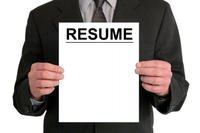Condoleezza Rice’s selection as US Secretary of State in 2005 was remarkable for how unmentioned her gender was. Nearly a decade earlier, Madeleine Albright had broken that barrier. As the highest-ranking women in American government, Rice and Albright symbolize one unalienable fact: Government -- one of the largest sectors of the American economy -- is a great place for women to work.
Women Join the Government in Larger Numbers
Marie O’Brien, president of the Connecticut Development Authority, notes that in hiring women, government has traditionally led the private sector. “Department and agency heads had to be sure the workforce reflected their constituencies, and women are voters,” she says.
Statistics back up her claim. According to the Bureau of Labor Statistics (BLS), as of November 2006, approximately 50 percent of all federal and state workers were female; at the local level, a bit more than half were. That compares with women comprising some 47 percent of the workplace overall.
If overall projections hold true, the number of women in local government will only increase. While federal government employment growth is predicted to increase by only 1.4 percent through 2014 due to budget constraints, the growing use of private contractors and the transfer of some functions to state and local governments, the state and local government employment has a different story to tell, according to the BLS. Employment there is expected to increase 11.3 percent in that period, thanks to rising populations and shifts in funding from the federal government.
Government Work Has Desirable Benefits
Why are women attracted to government work? One reason is stability. Government benefits are often better than those found in the private sector, and pay scales, benefits and promotion policies are clearly delineated, all of which can be particularly attractive to single mothers and others with uncertain financial circumstances.
Government positions also provide excellent opportunities for women to find valuable work during moments of transition, such as divorce. “And because government work also involves impacting people directly, it appeals to many women who want to make a difference,” says O’Brien.
Flexibility and location also come into play. According to the most recently available BLS statistics, 36.8 percent of the private sector works with a formal flexible schedule. In the public sector, that figure was 53.2 percent.
What’s more, Barbara Butler, director of the Department of Human Services for the town of Westport, Connecticut, points out that many government workers -- especially those at the local level -- work close to home. That’s helpful, because in America today, women bear the brunt of child and elder care. “People are smart, they work hard and care about the quality of what they do, but they can leave at 4:30 or 5 and take care of their family,” Butler says.
“Compared with business environments, there’s not the same stress and pressure,” she says. “You can make more money in private industry, but government offers defined hours for those who need it, and flexibility for others.” Travel demands are often less intense than the private sector with few worries about being transferred to another city.
Where Can You Land a Federal Job?
Though the federal government is based in Washington, DC, five out of every six federal employees work outside the capital. Federal employers include all the cabinet departments. There are also regulatory agencies such as the Securities and Exchange Commission and Federal Communications Commission, plus organizations like the Peace Corps and the National Aeronautics and Space Administration.
Job categories in government include health professionals, engineers, lawyers, computer specialists, accountants, and office and administrative personnel. Twenty-seven percent of federal employees are classified as working in “management, business and finance,” while 17 percent are in “office and administrative support” occupations.
What Are the More Local Government Jobs?
At the state and local levels, job categories include managers, administrative services, health officers, financial analysts, computer technicians and people working in departments such as education, housing, motor vehicles, environment, social services, judiciary and library. With the inclusion of quasi-government organizations like business development groups, job opportunities seem almost limitless.
Local governments employ more than twice as many workers as state governments. At the local level, fire departments and law enforcement workers are among the largest employers.
How Can You Get into Government Work?
O’Brien gives this advice to women who are considering government work: “If you’re not sure that you have marketable skills, volunteer to serve on a government board or commission in your area of interest. You can usually start at the local level -- something like economic development, wetlands, planning and zoning, recreation, youth or elderly services, or police or fire overseers.
“You’ll learn how that organization works, and you can network and meet people. You’ll realize that in government, hiring practices are very open.”
She also suggests getting involved politically, because some government positions are appointive. “Work your way up,” she suggests. “And don’t forget public-policy groups and think tanks.”
After all, that’s how Condoleezza Rice began.






















